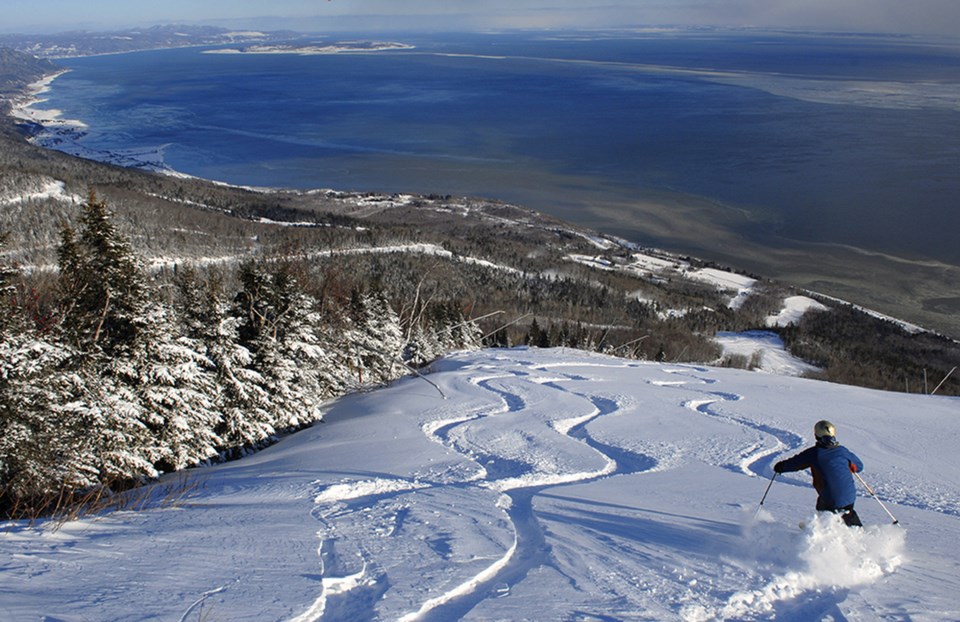The oldest tourist destination in North America has never technically been considered a hot spot, although its cool factor was initially a big part of the appeal.
The Charlevoix region of Quebec, located on the northern shores of the Saint-Lawrence River, first emerged as a holiday destination in the late 19th century, long before there was electricity or road service, let alone Wi-Fi or high-end spa facilities.
The first newcomer to arrive was actually three centuries earlier, although it was really more of a working holiday. When French explorer Samuel de Champlain first visited in 1608, he had trouble anchoring his ships at the shallow mouth of the Malbaie River and so named the area Malle Baye — archaic French for a “bad bay.” The area was renamed Murray Bay in 1762, by a couple of British Army officers who bought land in the area and are credited for bringing the first tourists to town.
To help lure sport fishermen to the area, the 250-room Manoir Richelieu Hotel was built in 1899, atop a cliff overlooking the waterway, and wealthy families from Boston, New York and other major cities looking to escape the heat soon established a summer presence in the town that remains today. William Taft, president of the United States from 1909 to 1913, had a summer home in La Malbaie and most visitors in those days would arrive via steamboats that had travelled along the Atlantic seaboard.
Today, people come to the region, designated a UNESCO World Biosphere Reserve in 1989, in the wintertime as well. A big reason for many is Le Massif de Charlevoix, a nearby ski hill boasting the tallest vertical drop (770 metres) east of the Rockies, which was recently named one of the world’s top 15 winter destinations by National Geographic.
A few decades ago, it was mainly a secret powder stash for Quebecois skiers who would shuttle to the top of the mountain in an old school bus. (Today the “base” of operations is located near the summit and is accessed off of Route 138.) Located a one-hour drive northeast of Quebec City and a 30 minutes past the Mont-Sainte-Anne resort, Le Massif is renowned for its annual snowfall (especially in March), epic out-of-bounds options and trails plunging down toward the water that give the optical illusion that wiping out could mean landing in the Saint Lawrence.
In 2002, Cirque du Soleil co-founder and avid skier Daniel Gauthier bought the mountain and invested $25 million in new lifts, runs and services to modernize the hill.
But it may not turn out to be an example of the saying, “If you build it, they will come,” although volunteer ski guide Dennis Allard says he hopes this will become the case.
“Everything is all about real estate now, and here it seems like it may be too late,” said Allard, 61, pointing to the fact that only a handful of 64 planned condo units at the bottom of the mountain have been sold. “The owners were also in talks with Club Med for a long time about building a new resort here, but that recently fell through, which was tough for people who live here who work in tourism and were putting a lot of hope in it.”
The mountain would’ve surely gained a higher profile as part of Quebec City’s planned bid to host the 2026 Winter Olympics, which was abandoned in part due to officials ruling that Le Massif ain’t no mountain high enough for the men’s downhill, falling short of the required 800-metre minimum vertical drop despite the construction of an 80-metre ramp atop the summit.
Then there is the question of snow. Le Massif’s famous off-piste area, which has the advantage of always leading down to sea level no matter how lost in the trees you might get, still didn’t have enough of it to be safe during this writer’s recent visit in late January.
“Normally we get around six metres of snow every year, but last year it was only around four,” said Allard. “Many of the lifts weren’t always operating as a result and some regular visitors were not too happy about it, so this year everything stays open all the time unless it gets too windy.”
Which it often does being located on the wind-swept shores of the mighty Saint-Lawrence. Finally, owners of Le Massif have opted to discontinue winter operation of a recently launched train service between Montmorency Falls and La Malbaie due to the expense.
But Le Massif literally seems too big to fail. While it may never become a chic resort packed with fancy hotels and restaurants, this is arguably part of its allure. And, even in the worst case scenario, that old school bus route will still be there for skiers and snowboarders willing to provide their own transportation.
Andrew Fleming was a guest of Tourism Quebec and Tourism Charlevoix.



